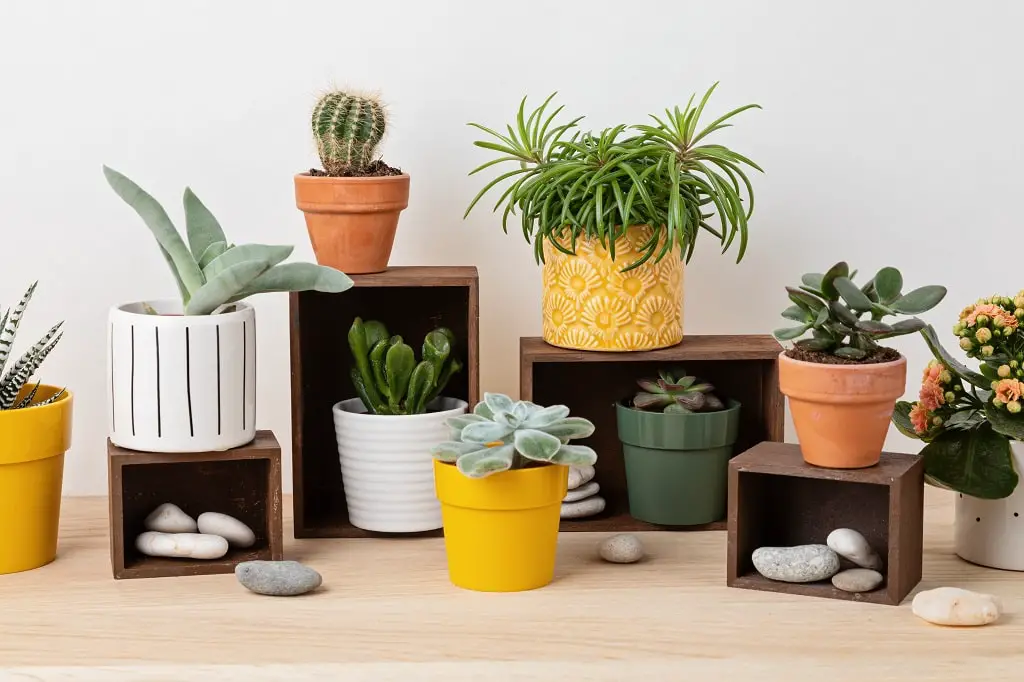This post contains affiliate links. When you buy through our links, we may earn a commission.
Do you know that cooking in a terra-cotta pot offers a variety of benefits?
In this modern world, to overlook our rich ancient traditions. There were days when our grandmothers used clay utensils to store and cook food and other items.

Terracotta or clay pots infuse natural minerals and nutrients into the food and retain the food’s natural taste. As a result, you will end up with best-in-class healthier, and tastier food at the end of the day.
Here in the blog, we highlighted 10 secrets that you should know about terra-cotta cooking. To learn more about types of clay pots that will enhance your convenience in some or another way.
- What Are The Different Types of Clay Pots?
- Terracotta Pots vs. Clay Pots
- Frequently Asked Questions (FAQ)
- What Are Terracotta Pots?
- What Are Terracotta Pots Made Of?
- Are Terracotta Pots Safe For Cooking?
- Why Are Terracotta Pots Bad?
- Do Terracotta Pots Contain Lead In Them?
- Are Clay Pots Toxic?
- How Long Do Terracotta Posts Last?
- Can Terracotta Go In The Dishwasher?
- Is Terracotta Better Than Ceramic?
- Can You Put Clay Pots In The Oven?
- Conclusion
What Are The Different Types of Clay Pots?
There are multiple types of clay pots available, and for your better understanding, we mentioned the most popular options.
Terra Cotta Pots
It is one of the popular forms of clay pots that every potter creates. It comes in both glazed and unglazed textures. Mostly these posts are left unglazed, which makes them unsafe for food and cooking.
On the other hand, glazed options can be used for food consumption. Always make sure to wash the pots with hands as it soaks detergent a lot.
Earthenware
It is a common form of clay pot and falls under the simplest category to utilize daily. These pots come in various categories, including glazed or unglazed, safe for food stiffs, compatible to withstand lower temperatures. It can be used as a cooking utensil but use a diffuser that provides a buffer.
Porcelain
The porcelain pots are made up of two clays and are Pure Kaolin clay and china clay. The two main qualities of porcelain include very high temperature with superior hardened structure.
These pots contain near to zero impurities hence offer white color. A porcelain pot can withstand 2300 – 2900 degrees.
Planters
Planters are essential clay pots that can be used in multiple ways. It offers low water retention properties, which doesn’t affect the roots of the plant.
The pots provide the best irrigation properties as it makes the soil breathe and mixes the nutrients uniformly across the soil.
Assembled Pots
These pots are customized clay pots that are made with unique techniques. Some techniques create coils of clays and pinching the clay to offer the desired shape. Some potters use slabs to provide support to begin clay pots.
Stoneware
It is also popular in pottery and is one of the best options for food consumption. The stoneware is extremely durable due to its high heat stability.
The clay pot is stronger and porous, which balances the water level. The cookware is 100% safe to be washed in a dishwasher with no degradation in quantities.
Terracotta Pots vs. Clay Pots
Both terracotta pots and clay pots are indeed similar in many factors. However, some differences make terracotta and clay pots different from each other.
| Terracotta Pots | Clay Pots |
|---|---|
| In general, a terracotta pot comes in dark red or yellowish-brown in color. | Clay pots can be of multiple colors black, blue, green, white, and many more. |
| Terracotta pots are superior in sonority and offer a sharp metallic sound which makes it the most durable. | Clay pots are also sonorous and strong enough to hold the soil in place. |
| Terra-cotta pots always come in an unglazed texture. It helps in maintaining the water balance and moisture of the soil. It boosts the growth of the plants too. | In general, most clay and ceramic pots come in a lustrous glazed look. Glazed surfaces are not good for plant growth. |
| Terracotta pots are precisely baked with direct flame at about 850 to 1100 degrees. The clay used in these pots contains iron which offers red color when baked. | Clay pots are baked explicitly at low temperatures only. However, you will notice black burn spots, which reflect a lack of uniformity in cooking. |
| Terracotta pots are highly watered absorbent, and porous. | Clay pots come in a highly glazed look with the use of oil and paints. |
Frequently Asked Questions (FAQ)
What Are Terracotta Pots?
Unglazed clay pots, also known as Terra-cotta pots mat mainly made up of a specific soil. The pots are manufactured by firing them in kilns.
The terra-cotta pots offer a comfortable and healthy ecosystem for every plant. The porous structure allows water and air to penetrate from the side of the pot and balances the soil’s moisture level.
What Are Terracotta Pots Made Of?
Terracotta pots are made up of baked clay.
They are porous, which allows the air and water to penetrate via the walls of the pot.
It offers a balanced atmosphere to the plants and improves the health of the plants. It eliminates the risk of root starving or overwatering diseases.
Are Terracotta Pots Safe For Cooking?
Yes, Terracotta pots are safe for cooking. Multiple premium brands don’t add lead to the clay to prepare their pots. With some brands, you will notice the traces of leads in their pots.
But rest assured that the lead contained in these pots never leaches harmful chemicals into your food. It is not recommended to cook highly acidic food in terracotta pots as it spoils the texture and reduces life.
Why Are Terracotta Pots Bad?
Terracotta pots are made up of baked clay, and the worst thing about these pots is breakable. It is true that terracotta offers the best looks but is very heavy in weight and not suitable to withstand chilling weather.
As the clay is baked, if you keep water in the pot during winters, the pot may suffer from cracking and flaking.
Do Terracotta Pots Contain Lead In Them?
Yes, Terracotta pots contain leads in them. Manufacturers use lead in some conditions where there is a need to incorporate colorful designs for decorative purposes.
Always make sure, should perfectly bake the terra-cotta pot you choose, or else it may leach lead into your food.
Are Clay Pots Toxic?
No, Clay pots are not toxic. Mostly clay pots are free from toxic materials and chemicals. The manufacturing is 100% eco-friendly and can be used with all kitchen appliances.
It also keeps all your foods safe and hygienic. Clay pots are best for individuals’ vegetarians, all organic, and vegans.
How Long Do Terracotta Posts Last?
Approximately a terra-cotta pot will last for three years. A low fired terra-cotta pot can last for at least 3 tears, whereas a premium quality pot will serve around 5 to 6 years.
However, some gardeners prefer to change the terracotta pots every 3 years as there is a myth that these pots come with a short lifespan.
Can Terracotta Go In The Dishwasher?
Yes, Terracotta pots are suitable to be used in a dishwasher.
However, make sure the wash cycle of the dishwasher must be gentle enough. It is also found that the painting quality decreases with multiple washing, so get ready with a new painting.
Is Terracotta Better Than Ceramic?
It is very difficult to differentiate which one is better as both pot types serve different purposes. A terra-cotta pot is promoting better air movement, which enhances root growth to achieve healthier plants. But it is also true that terracotta eliminates the moisture content of the soil.
On the other hand, ceramic pots are better if you want to over-water your plants, and it also helps you control and maintain dry soli texture.
Can You Put Clay Pots In The Oven?
It is not safe to put a clay pot in a preheated oven as it will develop cracks due to a sudden change of temperature. Clay pots can be used for cooking food but make sure not to add oil or other fats.
However, make sure not to place clay pots directly on top of the stove.
Conclusion
According to science and nature, a terra cotta pot or clay post offers numerous health benefits. It not only provides nontoxic cooking but also retains the real taste of your food.
Indeed, these pots always suffer from breakage and cracking issues. But if you maintain some precautions and utilize a heat buffer to distribute the heat to minimize the cracking problems evenly.
Nowadays, potters are crafting brilliantly well-designed clay pots which look superior. They portray the perfect blend of ancient benefits with modern looks.
